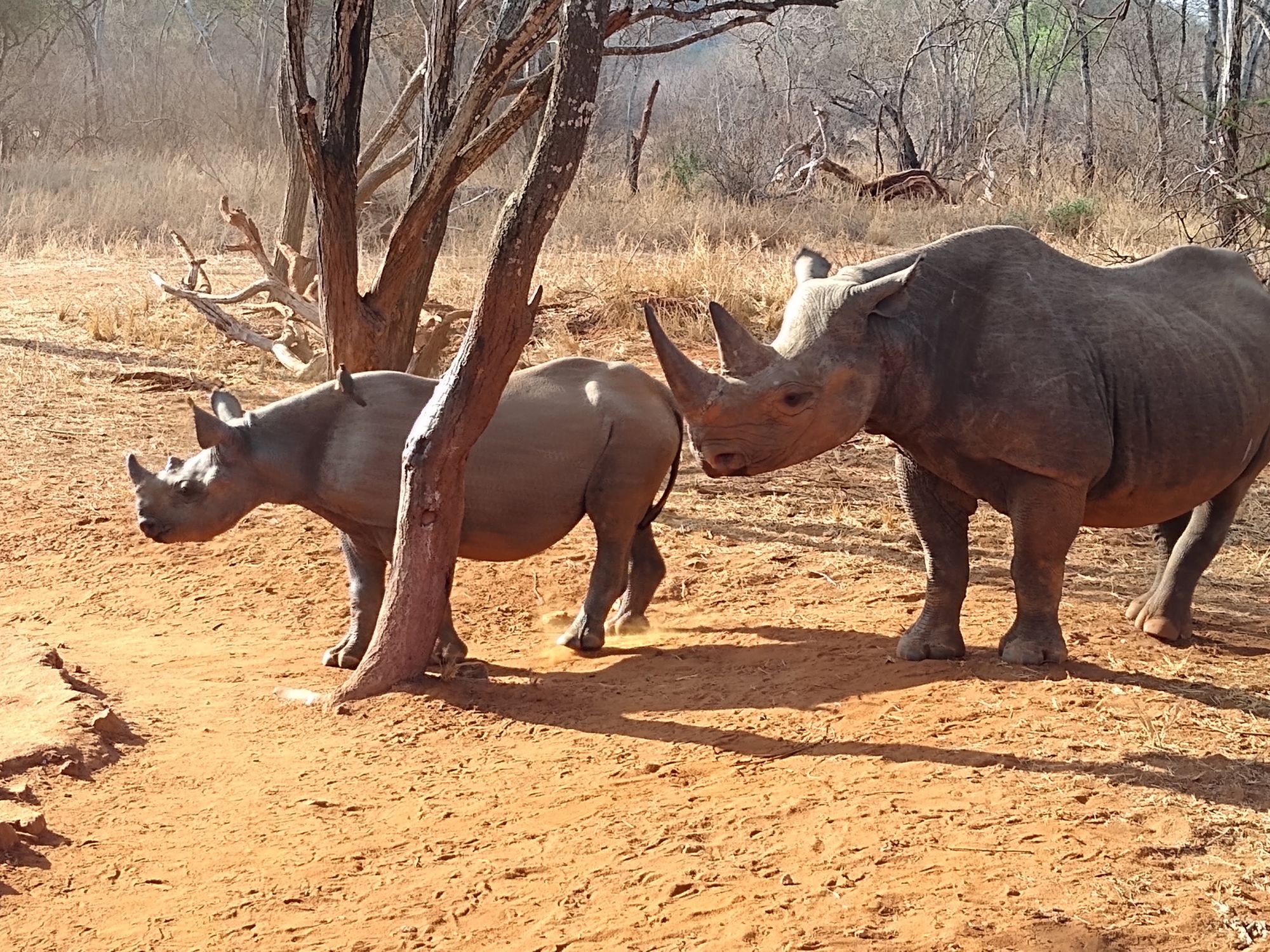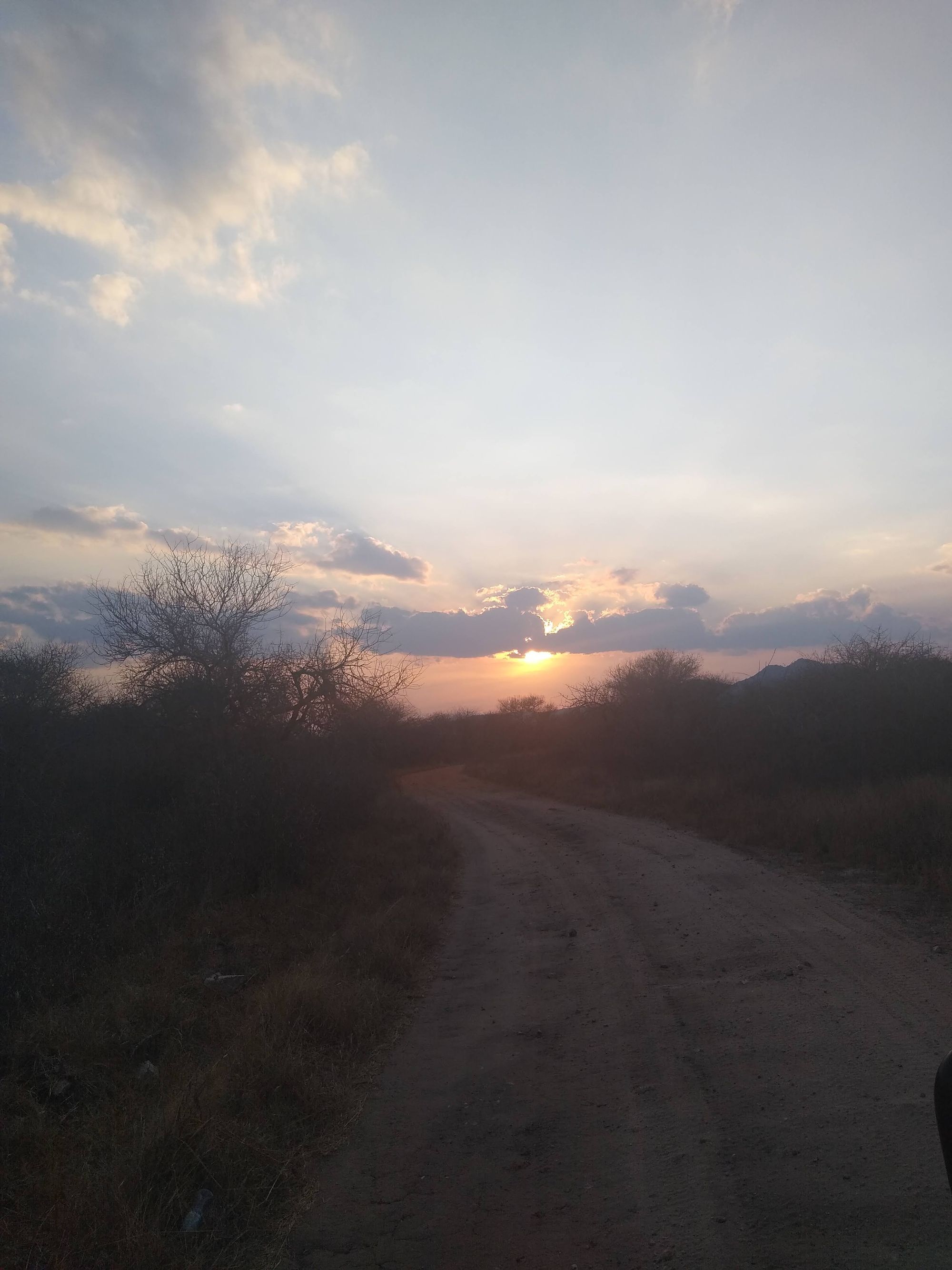
Brave the wilds, go a little further, and see what few others get to see.
Alladin, my guide, and I were hurtling through Mkomazi Park near the town of Same (SAH-may) Tanzania. This tiny town is 114 miles from Arusha, which is adventure central in this remarkable country. The drive takes you past mountain rangers, sisal farms and lots of communities full of people selling all manner of products on the roadside. It's a hike, and Mkomazi Park hasn't been a national park for long, only since 2006.
Because of that, lots of folks know nothing about it. That's why it's perfect. For those who prefer an adventure, the park is largely unspoiled. Driving through it is a treat for that reason alone.
Today, which was our second day in the park, we were in for something special. Tanzania has a fledging black rhino program, and Alladin had arranged for us to go see them. That mean a swift drive over the bumpy roads to a meeting point an hour away from the main gate. Neither of us knew what was in store, as it was Alladin's first time here, too.
My safari operator, Ben Jennings of ETrip Africa, knows I love new things, different things and exploring places where there aren't a lot of tourists. Most folks who head to Tanzania are drawn by well-known sites like Kilimanjaro, Ngorongoro Crater and the great game reserves to the south, the Selous and Ruaha National Parks. As a result, he is always sending me to far-flung places, sometimes where he hasn't yet sent his clients. That's my definition of fun.
Folks flock to known sites, and as Alladin explained to me on our long drives, the overcrowding there can be deeply frustrating both to guides and clients alike. Too many cars carrying too many people all compete for the best views and angles. In high season, and that's a different article, that can mean long waits to get your shot. By the time you get your chance, the animals may well be long gone.
Not here.
As we dashed towards the meeting site, we sent more than a few animals scrambling. Those creatures who live in this park aren't immured to the sight of Jeeps full of gawking tourists, and they run. While that might irritate some, that means that they're still truly wild. There is something wonderful about knowing that.
We flew by endless forests of trees which had been broken, smashed and leveled by elephants. These creatures stay well away from inhabited areas, at least so far, and you can see their movements. Elephants are uniquely powerful and devastating, and their presence can be found everywhere here.
At one point the previous day, Alladin and I had rounded a corner as we were exploring the area near a large water source. The bright blue and deep green of invasive water hyacinth form a brilliant watercolor against the brittle, dusty landscape of dry season.
The lack of vegetation, which doesn't appeal to many, is perfect for animal spotting. This is when you see newly-dropped babies of all species, and the variety of animals drawn to limited water supplies is incredible. The more leaves, the less you see.
What we saw were four huge bachelor elephants, their great tusks sloping gracefully and lethally out in front of them, making their slow way to the water. In all my trips to these countries, and there are some fourteen of them so far, I'd never seen this in the wild to date.

They blew water over their backs with great leisure, then ambled to a favorite spot to blow dust on themselves to protect their skin. The oldest bull rubbed his belly on a huge round rock just high enough for him to scratch himself. I was transfixed.
We were the only vehicle. That's why I love out-of-the-way places. They are worth it.
Today, however, it was to see Black rhinos. We had to pay extra for this, and we also had to be at a meeting point in time to be picked up by the rangers. The instructions weren't clear, and as happens often in Africa, the folks who took our ticket money didn't inform the rangers we were coming. We almost missed them.
We didn't, however, and so Alladin and I clambered onto the open Rover to drive to two places to see the rhinos.

The first stopping point was just behind a blind built into the ground like a military bunker. We drove up, stepped out quietly and walked down into a concrete box with a narrow opening through which we could observe and film five rhinos and all the local wildlife drinking water where it was pumped in for them and for our purposes.
For about twenty minutes, the other couple, two Czechs taking a break from family life, and I crowded to the window. The rhinos, alerted to our presence by the vehicle, waited. The warthogs didn't care. After a while the rhinos relaxed. Their poor eyesight but excellent sense of smell alerts them to danger in different ways, and when the prevailing winds swept much of the scent of humans away, they went back to being comfortable.
They fought the warthogs for the water, slept, rolled, and in every way gave us unbelievable access to their private moments, such as they can be in the wild with humans looking on.
Then our guides bundled us back into the vehicle, and off we headed in the slowly dropping but intense African sun towards another site.
Here, the driver brought us right alongside a watering hole, again designed to pump fresh water into a concrete depression so that the rhinos could drink all they needed. The rhinos already accustomed to the watering schedule, were already nearby. One mother and her baby took their fill, then were invited off by others who demanded their turn.

Late afternoon in an African game park is another kind of special. The sun paints everything an otherworldly gold, and the backlighting transforms these magnificent creatures into something else again. All of us sat in silence, transfixed.
Alladin told me later that in all his years as a guide, he'd never been so close as to hear the conversations these creatures have. They communicated by blowing air through their noses and making high-pitched squeals. We could hear all of it. You just don't often get that close to hear what rhinos have to say.
As it turns out, quite a bit.
Since the park closes at 7, and it's an hour's drive to reach the front gate on an unpredictable road (you never know who or what might be blocking your way, and you WILL lose that standoff if you press your luck, we moved on. The couple went their way, and Alladin angled for me to see more. We had just enough time.
That "more" was a compound full of African wild dogs, which are being bred for release back into the wild.

The fenced compound held a large number of these gorgeous, deadly creatures. Their satellite-dish ears swiveled towards our small group as we approached. Feeding hour, perhaps, or approaching prey, more likely. The animals flowed like water. The man in charge, Sheffie Hassan, bravely walked into the compound, moving slowly, the animals tracking him. He kept his eye on those in front, watching to make sure they didn't encircle him. I watched, fascinated, as these amazing creatures fixated on him, moved like a steady river, seeking any opportunity. He didn't allow it. He walked back out, very slowly so as not to agitate them to chase and attack.
Wild dogs are being poisoned out of existence in many parts of Africa, again the perennial human/wildlife conflict issue. The Tanzanian team knows that many of these dogs, now in their fourth generation at this compound, will not make it, for they are inevitably drawn where there is livestock.
However, where the government understands that conservation makes them money and brings them tourists, there are programs in place and growing.
Alladin and I both tipped the men for the extra courtesy, then sped back to Same to make the gate before it closed. Along the way, as had been the case so far on this trip, I ran out of battery on my camera, and then my phone was overwhelmed with too many photos.
Just as we were witnessing one of those spectacular, once-in-a-lifetime African sunsets.
As we sent dik diks flying and various other late evening scavengers back into the bushes, I tried to dump old files to make room to capture what I feared might be my only Big Sunset moment. Turned out I was right, and I barely captured the essence of it.

I got this, but ended up, as is fair to both Tanzania and to my precious memory bank, more memories of hanging my head out the window to watch the sun drop. that was far more gorgeous. Alladin sped straight towards the sun, and we made it just as the guard was ready to close the gate.
The park has picnic facilities high enough to be safe, and plenty of side roads for exploring. There is plenty of wildlife, and I saw elephants and babies everywhere which tells me the bachelors have been busy.
Same might be a bit out of the way for those folks keen on seeing the typical tourist destinations, but it offers what those don't: the same animals at a fraction of the tourist traffic. And some up close and personal opportunities for photos you can't get most places.
Comments powered by Talkyard.